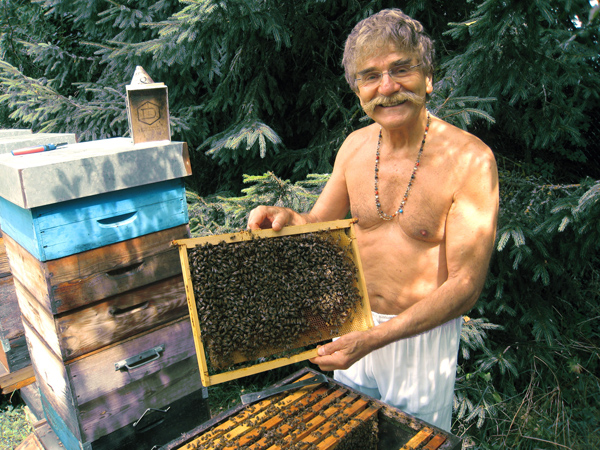|
Reviews of Recent Independent, Foreign, & Documentary Films in Theaters and DVD/Home Video

QUEEN OF THE SUN: WHAT ARE
THE BEES TELLING US? Taggart Siegel’s sober-minded (and sobering) documentary meticulously lays out evidence that the honeybee—maybe nature’s most important creature, since it nearly single-handedly ensures the continued propagation of most plant life on earth—is dying off in huge numbers, which will almost certainly create a catastrophe of epic proportions that will also affect life as humans know it. Despite such a gloomy prognosis at its center, Queen of the Sun: What Are the Bees Telling Us? is admirably restrained, even lighthearted, in explaining this alarming premise. Much of the film is taken up by interviews with various bee lovers, mainly experts and beekeepers, from around the world, all of whom discuss engagingly and with candor their love for bees and bees’ role in nature’s very survival. “Beekeepers are chosen by bees,” says one quirky character, which pretty much sums up a peculiar but legitimate worldview. Why are bees dying at such an alarming rate? It seems to be a widespread incidence of colony collapse disorder, which was predicted by Rudolf Steiner, a scientist and philosopher, back in 1923. The film’s many talking heads describe how pesticides are a major culprit, as is the introduction of non-native bee species into certain areas. They bring with them diseases that native bees are not resistant to, causing calamitous consequences. Massive agricultural industrialization has also caused a shift in how certain crops are grown, and whole areas where bees were once plentiful are now barren because the current plant life doesn’t sustain the growth of hives. Even if one thinks it’s too alarmist (which it’s not), Queen of the Sun can still be appreciated simply as a loving document of nature. The superb photography catches every microscopic bit of beauty as the bees pollinate an array of colorful flowers. The insects are seen in their hives dripping with golden honey or swarming in a tree in the Bronx—a particularly unlikely but amazing moment while one New York City beekeeper talks about her rooftop hive. Even the opening shots, of an attractive young woman performing a dance as she sways and moves with hundreds of bees covering her body, are an eye-opening introduction to a strangely intoxicating world. We also
hear life-affirming tidbits, like from author Michael Pollan, who makes
clear that, at least aesthetically, bees and humans are similar: both
species agree on the beauty of flowers’ colors and scents. The
flowers that bees pollinate are also the ones most people find beautiful
in our very own yards and gardens. Compare this to the plants that look
and smell awful, and which are usually pollinated by filthy flies. For
aesthetics alone, we should ensure that honeybees survive, but there are
so many more compelling reasons, which Queen of the Sun
painstakingly maps out.
Kevin Filipski
|

